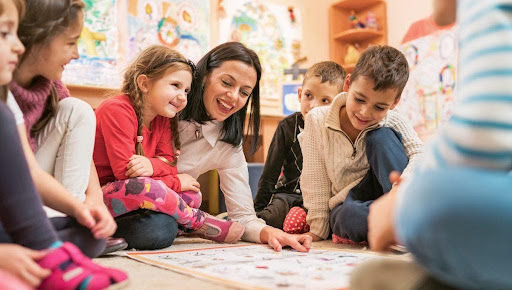How Environment Plays A Huge Role on The Development of Children with ASD
- HEALIS AUTISM CENTRE

- Dec 13, 2022
- 3 min read
Updated: Dec 12, 2024

Providing a safe, supportive, and nurturing environment is essential for the healthy development of all children, even more so for children with Autism Spectrum Disorder (ASD). Children with ASD typically experience communication and social difficulties, are reliant on certain rules or routines, and may be sensitive to sounds or touch. An environment that accommodates to the needs of children with ASD can help to boost their physical, cognitive, social, and emotional development.
Firstly, it is important to provide children with ASD a comfortable and safe space for learning. The physical space should be structured based on the child’s specific needs to create a conducive learning environment. For instance, the use of calm colours and comfortable lighting can be helpful for children who are sensitive to bright lights. Having a comfortable chair and sensory objects (such as a weighted blanket or wiggle cushion) can address the child’s tactile needs. A cluttered-free environment allows children to move around safely and provides less distraction for learning. The use of relaxing background music or children’s favourite songs may be useful for children who requires auditory input for sensory regulation. Hence, by addressing the sensory needs of children with ASD, this creates less disruption to their learning, improving their ability to acquire new skills.
Secondly, a structured and consistent environment provides a stress-free learning experience for children with ASD. Children with ASD typically learn best when they follow a routine as they understand the expectations of the activities. The use of visual aids, such as a written or picture schedule, can be extremely useful in informing the child of their daily activities. If the change in schedule is unavoidable, it is necessary to prepare the child well in advanced, providing details about the change as much as possible. This helps to alleviate the stress and anxiety caused by deviations from their routines, allowing them to cope better with changes. In addition, maintaining consistency in the techniques used to interact with the child and manage their challenging behaviors is also crucial. Parents and therapists/teachers can adopt the same techniques to help children with ASD to apply their knowledge and skills across different settings (e.g., home and school), thus reinforcing their learning. Specific situations can even be contrived at home to allow children to apply the skills learnt at school to home. For instance, in order to encourage children to request for help, parents can block their child’s access to the television by removing the batteries of the remote control. This creates more opportunities for children to apply their acquired skills at a natural setting (i.e., at home). Therefore, with a highly predicted and consistent environment, children with ASD are able to learn with minimal stress and generalize their learning across various settings.
Lastly, as with most children, children with ASD learn best in a fun and engaging environment. Rewarding positive behaviors using social praises, toys, favourite snacks, or even physical touch can help to motivate children to display the behaviors more often. The learning of new skills can also be integrated with play to make it more exciting for children. For example, play-doh can be used to develop children’s motor skills, such as rolling, pinching, and pressing. The singing of nursery rhymes or children’s favourite songs can be used to elicit more vocalizations, promoting their language capabilities, especially for non- or pre-verbal children. As children with ASD may play with the toys in certain non-conventional ways, teaching them new and interesting ways of playing with toys can aid in expanding their play skills and improving social play with their peers. By providing an exciting and rewarding environment for children with ASD, they are more likely to learn better and most importantly, they will enjoy learning.
All in all, exposing children with ASD to the right kind of environment can positively affect their learning and development. Creating a comfortable, consistent, and fun environment can help them to grow and thrive, allowing them to realize their potential.
Written by Xiao Hui
References
Autism Society. (2020). Environmental Modifications for Children with Autism: How to Shape the Environment to Boost Success.
Help Guide. (n.d.). Helping Your Child with Autism Thrive. Retrieved from https://www.helpguide.org/articles/autism-learning-disabilities/helping-your-child-with-autism-thrive.htm
Stages Learning. (2021). 10 Tips for Teaching Young Children with Autism Spectrum Disorder. Retrieved from https://blog.stageslearning.com/blog/10-tips-for-teaching-young-children-with-autism-spectrum-disorder








Comments